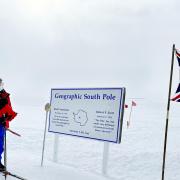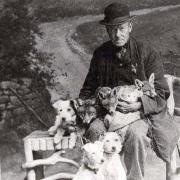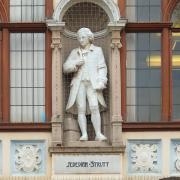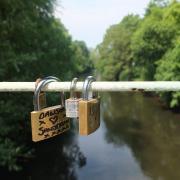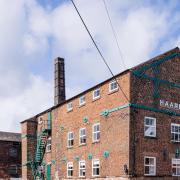Lead mining was once the mainstay of Peak District villages like Youlgrave, but a tragic event nearly 90 years ago revealed incredible acts of bravery and self-sacrifice and brought a community together, as Andrew McCloy reports

It was just before six in the evening when the alarm was first raised. Within minutes the news spread around the village that there had been an explosion and men were seen running down the lane and racing across the fields to get to the mine. As more and more people gathered by the pit head winding gear to form search parties, there must have been a mounting dread that in this small, tight-knit community where the mine played such a central role, could it be their father, son or brother that they would never see alive again?
It was 23rd May 1932 and Mawstone Mine, about half a mile south of Youlgrave, near Bakewell, had been idle for the weekend as maintenance work was carried out on its ventilation system. The hunt for valuable veins of lead ore had begun here in the 1880s and Mawstone was one of many similar small mines dotted around the limestone uplands of northern Derbyshire. It was a hazardous business carried out in distinctly unpleasant conditions. Water flooded the mines and had to be almost constantly pumped out; but the real danger was from an inflammable gas known as firedamp which contained methane, to which Mawstone was especially prone because the workings ran through layers of shale. At the time of the accident there were 32 miners on the payroll, most of them local men, although that figure fluctuated depending on output and the success of the mine - which, in turn, caused Youlgrave's population and prosperity to rise and fall.
Six men were down the mine that day working on the fans, and it seems likely that as they turned the fan motor on and off a spark inadvertently escaped from the switchbox and ignited the ever-present gas. The result was an explosion described by engineman Joseph Goldstraw, located above ground, as 'a very big gush of wind and then a rumble like thunder' which lifted the wooden planks around the shaft entrance. One of the six men, George Frost, although deeply shaken, managed to struggle to the bottom of the shaft and was winched out. He explained what had happened and, as the news spread, more and more people arrived at the scene and volunteer rescue parties hurriedly formed. One was led by mine manager Kenneth Seville, who had already made an abortive solo attempt to retrieve the five men. He was then joined by, amongst others, miners Eric Evans and Jack Birds; local publican Albert Harrison and blacksmith Harry Ollerenshaw; and Youlgrave's GP William Harrison - the first time the village doctor had ever ventured underground!
Conditions below the surface were dreadful. The would-be rescuers made their way down hot and fume-filled tunnels, desperate to find their friends and comrades. With no specialist apparatus, they breathed through handkerchiefs; or, in the case of Philip Oldfield, just a cap held in front of his nose. Herbert Slaney later told a reporter from the Daily Mail: 'There were acrid fumes like thick fog, making useless our electric lamps; the heat was unbearable and the poisoned atmosphere was death itself. I crawled for nearly 20 yards before realising the hopelessness of it all, and I got back just in time.'

Dr Harrison also recounted his experience underground: 'Mr Seville was dying when the rescue party found him. He had penetrated into the workings half-way to the scene of the explosion, without a gas mask or any sort of protection from what he must have known was a certain death. His courage can only be described as magnificent.'
One by one the casualties were eventually brought to the surface, where Dr Harrison and District Nurse Stevenson attempted, without success, to resuscitate the stricken men. The Derbyshire Times vividly described the scene: 'There was a terrible strangeness and tension about the atmosphere... the drone of the engine and the occasional clanging of the bell to indicate that the cage was about to come up were almost the only sounds which broke the stillness of the night. No one could have stood in that crowd without feeling strangely moved.'
An urgent appeal for help had been sent to the North Midlands Coal Owners' Rescue Stations at Mansfield and Chesterfield, and at 7pm a rescue party arrived, complete with breathing apparatus, but it was too late. That night, the engine-room of the mine was converted into a temporary mortuary and eight bodies were laid out. Five had died in the initial explosion, and a further three perished in the attempt to rescue them. They included mine captain Poultney Poulter and his 27-year-old son James, mine manager Kenneth Seville, and William Brindley (22), Eric Evans (23) and Jack Birds (24).
It was a devastating blow for the small Derbyshire community. Nearly everyone in Youlgrave either knew one of the victims as a friend or neighbour; or in many cases was related to them. A few days later five of the funerals were held in the village. It was reported that the procession stretched the length of the main street, over a half a mile; and the Sheffield Independent newspaper described how, in the pouring rain, 'the whole village went into mourning, and the skies, so it seemed, wept in sympathy.' All the shops were shut and window blinds and curtains drawn, while local mines and quarries closed down as a mark of respect. 'To the mournful sound of the muffled bells the long procession passed slowly along the village street,' the newspaper reported. 'The coffins were borne by comrades of the dead; men who worked with them in the mine and assisted in the rescue work. Behind each coffin followed the family mourners, then the Scouts, the British Legion, and the village people.'

The tragedy made national headlines and messages of sympathy poured in, including from the Duke of Devonshire and Lord Hartington, MP for West Derbyshire. A week later, several of the rescuers were presented to the Prince of Wales (later King Edward VIII), during his visit to the War Memorial Institute at Ashford-in-the-Water. A newspaper reported the encounter: 'The Prince was deeply concerned regarding the explosion and questioned the men closely as to how it occurred. He asked how many men there were in the mine and how many were killed, and on being informed of the facts he remarked sadly "Very bad luck."'
The Inquest that followed found that the eight men had died from carbon monoxide poisoning, exacerbated by burns and shock from the blast. The jury decided that there was not enough evidence to establish the cause of the explosion for certain, but earlier the Coroner had conjectured that it was likely to be an accident caused by faulty ventilation equipment. However, he also went out of his way to praise the tremendous bravery of those who tried to rescue the five men. There were similar tributes from a range of people and organisations. The Derbyshire Times described the episode as 'heroism unsurpassed in the history of mining,' and this was echoed later in the year when several of the would-be rescuers received gallantry awards at a ceremony in Bakewell. Alderman Crossland, Chairman of the Bench, told the assembled audience that 'it was gratifying to know that there were in the district men who would willingly come forward to try to rescue others at the risk of their own lives.' Several of the widows and bereaved parents of those men that had died were also awarded pensions for life, while blacksmith George Ollerenshaw received a gold watch, Dr Harrison an oak bureau and publican Albert Harrison a grandmother clock. The clock, which stood in Youlgrave's Farmyard Inn until as recently as 1979, had a plaque on it that read: 'For heroic endeavour to save human life'.
Despite the tragedy, mining continued at Mawstone in fits and starts until the 1950s, when like everywhere else in the Peak District lead production became uneconomical and ceased altogether. The site is now privately-owned and not accessible to the public, but in a mildly ironic twist the very water that bedevilled the prospectors at Mawstone Mine is now used as a back-up supply for Youlgrave Waterworks Ltd. Indeed, the same stoicism and self-sufficiency that shone through in the small community nearly 90 years ago is there still in this village-owned community asset, one of the last privately run water companies left in England. It's also there in the vibrant village school, the family-run shops, garage, pubs and bakery, and in the wide array of social groups. Lead mining may be long gone, but the community spirit remains.

For the full story read The Mawstone Mine Disaster by Andrew McCloy & Norman Wilson, available as a free download from www.youlgrave.org.uk/bugle-archives









